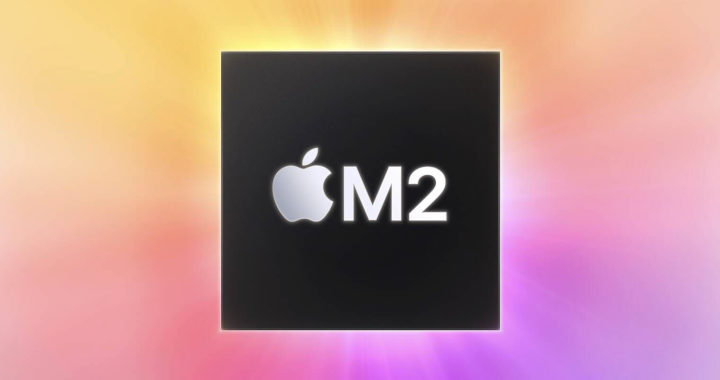Less than two years since the introduction of the Apple M1 and less than a year since it announced the M1 Pro and M1 Max variants, Apple announced the newer Apple M2 system-on-a-chip during its Worldwide Developers Conference held in June 2022.
Note that the company earlier introduced the beefed-up and top-tier Apple M1 Ultra chip that featured its UltraFusion technology during its March 2022 Apple Event.
The M2 is fundamentally the second-generation chip of the entire Apple M series designed for its Mac line of computers and top-tier iPad devices. The fourth-generation and redesigned MacBook Air is the first Apple device to feature this new chip from Apple.
Specifications and New Features of Apple M2
The Apple M2 is still based on the same 5-nanometer process node technology that was first demonstrated by Apple in its A15 Bionic chip and its Apple M1 chip. However, the company noted that it uses its second-generation process node technology, thus making this chip faster than its predecessor and more energy efficient.
Furthermore, this SoC includes key components founds in the M1. These include a CPU, an integrated GPU, Neural Engine, a Unified Memory Architecture, Secure Enclave, solid-state drive controller, a dedicated image signal processor, media engines for encoding and decoding, and a Thunderbolt controller with USB 4 support.
The following are the key specifications of this new chip:
Central Processing Unit: Similar to the Apple M1, the CPU of the Apple M2 has a total of 8 cores. There are specifically 4 performance cores for running resource-intensive tasks and applications and 4 efficiency cores for low-power consumption.
Graphics Processing Unit: The integrated GPU of this SoC has 8 cores for the base model and 10 cores for the next-level configuration option. The base configuration has been rated to have 3.6 teraflops. Note that the Apple M1 has a 7-core to 8-core integrated GPU and its base configuration has theoretical teraflops of 2.6.
Neural Engine: It also has the same 16-core Neural Engine for dedicated artificial intelligence and machine learning processing. But the second-generation process node technology makes it about 40 percent faster than the same component found in the M1. It can specifically perform 15.8 trillion operations per second.
Random Access Memory: Apple uses the same Unified Memory Architecture found in its previous M series chips. It has 100GB/s memory bandwidth. The base configuration has 8GB of memory but there is an option for a 24GB of memory.
Other Components: Based on the available specs sheet, the media engine includes a higher-bandwidth video decoder that supports 8K H.264 and HEVC video, a ProRes video engine that enables playback of multiple streams of both 4K and 8K video, and a new and better dedicated image signal processor.
Comparison With The Previous Apple M1 Chips
Remember that there is about a two-year gap between the M1 and M2. What exactly is the difference between the Apple M1 and the Apple M2? How is it different from the M1 Pro and M1 Max, as well as the M1 Ultra in terms of capabilities and performance?
Apple noted that the second-generation M chip has 25 percent more transistors than the M1 or about 20 billion transistors. Furthermore, it is 1.4x faster than the first-generation with an 18 percent faster CPU and a 35 percent more powerful integrated GPU, as well as a 40 percent faster Neural Engine. The M2 has notable performance improvements over the M1.
Results from benchmark tests using Geekbench have shown that the Apple M2 is up to 12 percent to 20 percent faster than Apple M1. Its specific single-core score is 1919 compared to the 1707 single-core score of the M1. For multi-core performance, it has a score of 8928 compared with the 7419 multi-core scores of the M1.
As the second-generation M chip from Apple, the M2 is better than M1 in terms of processing capabilities and overall performance. However, despite being one, it is essential to note that it is not faster than the Apple M1 Max, the Apple M1 Pro, and of course, the Apple M1 Ultra.
It is also important to reiterate the fact that this chip is still based on the 5nm process node technology. However, to feature 20 billion transistors, the physical size of the Apple M2 is slightly bigger than the physical size of the Apple M1—which has 16 billion transistors. Note that the M1 Pro has 33.7 billion transistors while M1 Max has 57 billion.
Note that the M2 has a better GPU compared with the M1 and with other integrated graphics solutions. However, it is important to note that when compared to discrete graphics, its performance is relatively average to above-average at best.
